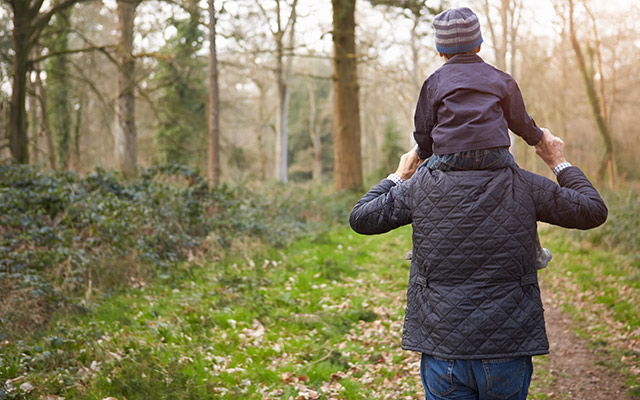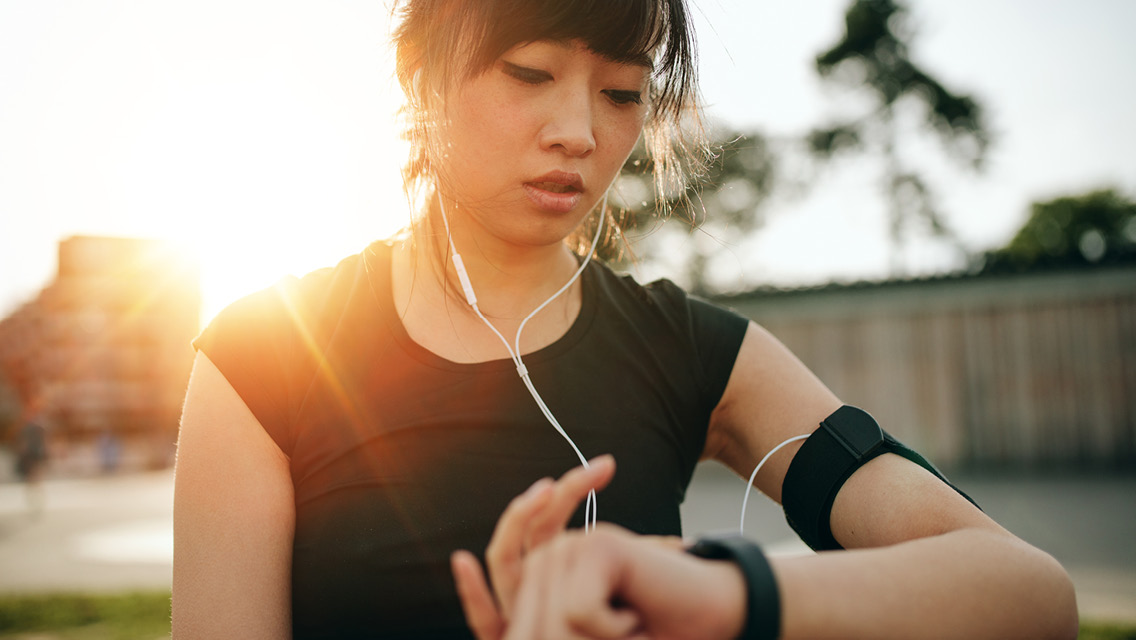My functional fitness journey didn’t start with a “lose weight” plea from a dying loved one or a lecture from my doctor. Instead, my attitude about taking care of myself shifted in July 2010, when my daughter Emily, then 20, was hospitalized for heart failure resulting from a congenital condition.
That summer, I somehow juggled long hospital visits and my hectic work schedule. As a result of my balancing act, my belt got looser. I literally had to pull it in a notch. I was shocked to lose weight without exercising or changing how I ate, especially after years of trying every fad diet out there.
My daughter’s doctors told her that living the typical college lifestyle, specifically drinking alcohol, would worsen her condition, and she needed to stop. As it was, I considered myself a marginal drunk. I was drinking up to a half-gallon of rum a week and felt it would be hypocritical to ask Emily to stop without doing the same. So, that August, I stopped my lifelong habit cold turkey. It was tough, but probably a lot harder on the people who put up with my crankiness.
Change Brings Change
About two weeks after I stopped drinking, something clicked. I figured that if I had already lost a few pounds and was changing things in my life, why not add some direct effort to see if I could lose some of the 320 pounds that I’d spent 44 years accumulating.
That decision made obvious sense. I had an extensive family history of heart disease and hypertension. I was already taking medication for high blood pressure and high cholesterol, and I knew I was on a path to diabetes. I didn’t have a lot to lose by trying to get healthy. I certainly had a lot to gain.
I started slowly. Every night, I walked for 15 minutes, gradually working up to an hour. I’ve had chronic shin splints my entire life; the weeks of easy walking eased that pain considerably.
After researching clean eating, I dropped processed carbohydrates and sugars from my diet, while watching my balance of protein, fats and carbs.
Feeling stronger and ready for a challenge, I decided to start resistance training. I joined a local strip-mall gym, but I was chastised for grunting while working out. The gym didn’t have any barbells; it did, however, host pizza nights and bagel mornings! After six weeks, I realized that gym wasn’t a good fit for me — I needed an environment geared to my goals. I did the research and that November joined the Life Time Fitness club in nearby Canton, Mich.
What a change! The membership adviser immediately hooked me up with a personal trainer, who introduced me to supersets, core work, full-body exercises and — best of all — kettlebells.
Going to the club and working out became a part of my daily schedule. I discovered zone training, where I used a heart-rate monitor to effectively gauge whether I was meeting my aerobic goals. I’m an information technology manager, so using numbers, targets and goals appeals to my analytical nature more than someone just telling me to “go work hard.”
That same love for numbers also helped me continue to improve my eating habits. I downloaded an app onto my phone to help me keep track of my food intake, and also to determine whether I was eating the right combination of carbohydrates, fats and protein.
Around the time I joined Life Time, I also worked up the courage to start jogging. Within months, my training schedule progressed to a five- or six-day-a-week routine in which I alternated jogging with resistance training. The next spring, I bought my first bike in 20 years and began riding outdoors as soon as the weather cleared. Today, I try to complete at least one 25-mile ride every week.
Home Run for Health
In the past year, I have lost 100 pounds and won the Canton Life Time Fitness 2011 90-Day Weight Loss Challenge. I also have increased my fitness to the point where I can bench-press one-and-a-half times my body weight. I can run a 27-minute 5K and do 500 continuous kettlebell snatches.
My improved “functional fitness” has made a huge difference outside the gym, as well. I no longer take blood pressure or cholesterol medicines. I can mow the lawn and still have energy to do other things the rest of the day. I use the stairs in most buildings instead of the elevator. I can play softball and run out my home runs, which were always doubles or triples before I got in shape. The home improvements I used to avoid are now getting done because I have the ambition, strength and stamina to do them. And I’ll keep this G-rated, but my wife, Lianne, likes the changes, too, which may be the best reward of all.
My training goes on. I have another 20 to 30 pounds to lose, and other goals to achieve. I’d like to run a marathon and maybe even compete in a triathlon someday. My commitment to fitness has given me the confidence to reconnect with old friends who I had been too ashamed to see because of my weight.
And, my training has influenced my entire family. In June 2011, I happily lost a 5K race by 15 seconds to one of my daughters. Lianne has started running, and my kids are all more active. I’m proud that I was the example who got them moving.
Best of all, Emily received a heart transplant on Nov. 17, 2011. I think it’s safe to say we’re all in much healthier places these days!
Success Summary
Meet: Mark Miller, 45, an IT manager from Westland, Mich., who is married with five kids and one granddaughter.
Big Achievements: Losing 100 pounds (and still going); raising successful kids.
Big Inspiration: Being healthy enough to enjoy his first grandchild, born in October 2011.
What Worked: Supporting his efforts with fun technology, like a GPS-heart-rate monitor, a Wi-Fi-enabled scale, and a food-choice app on his iPhone to support his progress. Also helpful: following a low-carb, high-protein diet rich in whole foods; planning his workouts and prepping his meals at the beginning of the week
What Didn’t: Eating right and not exercising didn’t produce results. Neither did exercising without dietary changes.
Words of Wisdom: “Pay attention to your personal interests and preferences,” says Miller. “The exercise machine that works best is the one that you will use. Likewise, the best time to work out is the time you’ll go. Go with what feels best to you.”



This Post Has 0 Comments